
√ The History of Kefalonia |
The Lighthouse called "Fanari" in the capital of Argostoli
|
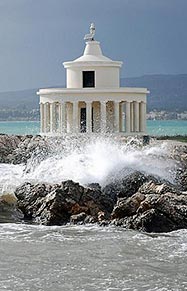 |
To better understand culture, literature and soul of Kefalonia people, it must be said that being this island a crossroads between East and West, it has inevitably suffered the domination of many western and eastern nations over the centuries. The experiences of siege, occupation and war, the kidnapping of young people deported and forced to heavy labor as slaves in other countries, and the presence of gentle arts like music, painting, architecture, literature, and dance, have strongly influenced the life of the inhabitants of Kefalonia. It's widespread opinion that, all over Greece, the culture of Ionian provinces (Corfu, Lefkada, Kefalonia and Zante) is the most sophisticated in relation to art, music, literature and architecture. This is mainly due to the influence of the Venetians, who ruled the area for 300 years. Kefalonia could be considered as a cultural garden, since it shows traces from all those cultures present on the island throughout the centuries. Archaeological finds in different areas of Kefalonia gave evidence that the island was inhabited since 10,000 BC, reaching a peak of civilization during the Mycenaean period (1500-1100 BC). The mythology tells that the young Kefalos, a refugee from Athens, once arrived in Kefalonia and defeated a group of people called Tafi, who lived in the western peninsula of the island, had been controlling the island for a long period of time before becaming the King. So, he named the island Kefalonia or Cephalonia. King Kefalos had four children: Pali, Sami, Krani and Proni, who received a portion of the island each, and for a period of time, each of these areas was an independent democracy. We can still see these names on the map of the island. Krani is the area at the foot of the mountains around Argostoli. There are a few important historical events from the Roman to the Byzantine period. The most significant event occurred in the period 886-912 AD, when Kefalonia was appointed as the seat of the provincial government of Ionian Islands. From the 1082 A.D. (26 years after William the Conqueror occupied England) until 1479 (13 years before Columbus discovered America), the Normans, thanks to baron Robert Guiscard (from whom comes the name of Fiskardo village), dominated Kefalonia. During this period of history, the island's capital was The Fortress (or Castle) of St. George located in Peratata. In 1479 the Turks occupied Cephalonia. Twenty-one years later, on December 24th, the Venetians occupied and conquered St. George Castle and ruled the island of Cephalonia for the next 300 years, influencing its culture, architecture and language. During this period, two towns began to develop, Argostoli and Lixouri. In 1757 the House of the venetian Governor was moved from Saint George Castle to Argostoli, which became the the capital of Kefalonia. When in 1797 Napoleon abolished the Venetian state it happened that in the following 18 years the island of Kefalonia (as well as the other Ionian islands) passed into the hands of the French, the Russians, the Turks and the British. In 1815, the Congress of Vienna and the Treaty of Paris passed the law that turned all Ionian islands into the "United States of the Ionian Islands", an independent state under the protection of the British. In 1812, the British government appointed Charles Napier as the civil and military governor of the island. He was who built bridges, roads and public buildings, the most important of which was the Markato in Lixouri. The Markato was the first Courthouse on the island of Kefalonia, with a capacity of 600 people. This beautiful and famous building, a landmark on the island, stood until the earthquake of 1953. The inhabitants of Kefalonia had to the heart the ideals of American and French Revolutions, which in the long run led to their effective independence and freedom, but in the short term led to political disorders and bloodshed. Three brave men, Elias Zervos, Joseph Manferatos and Gerasimos Livadas, led the revolt of the people against England. Using the persecution, the exile, the imprisonment, and many other means of violence, the British tried to contain the insurrection, but with no results. In 1850, the Queen declared free elections, and the first greek parliament, called Ionian Parliament, was thus formed. For the following 14 years the Kefalonia people struggled to annex to the unoccupied Greece (at that time some greek regions were still occupied by the Ottoman Empire). Finally on May 21st, 1864, at noon, the British sailed away from Kefalonia, thus realizing the dream of the island to be annexed to Greece. Nowadays the "Feast of May 21" is still celebrated in all seven Ionian islands. In 1900, Kefalonia played an important role in both the first and the second world wars, but unfortunately it was occupied by the Italians and the Germans during the Second World War. Many villages were bombed, many people were killed or executed, and many families have been destroyed. After the Second World War, the civil war broke out in Greece, causing much more bloodshed and pain. Not long after, in 1953, an earthquake hits the island of Kefalonia destroying 90% of the houses, and plunging the island into economic, social and geological collapse. So many inhabitants left the island minimizing the population. However, political and social changes took place in the early 1950, allowing the steady progress of the tiller of the soil, so far considered "a kind of servant." This change was made by a law in 1954 which changed the system under which the land should be owned by few landowners who cultivated using slaves. In short, the law stated that the owner's land should have been divided as follows: the land cultivated by a "servant" worker had to be splitted so that the worker would have received half ownership in that land he had been cultivated. In addition, the law established that the worker had been able to preempt any land the owner wanted to sell. This law has allowed all people, especially the poor and humble, to become financially independent for the first time. During the dictatorship of George Papadopoulos, in the late 60s, running water and electricity were brought to the island, while in the mid-80s telephone lines were installed in all villages, bringing a better quality of life to residents. The Kefalonia Massacre: In 1943, on sep 8th, the commander of Italian "Acqui" division (General Antonio Gandin with a division consisting of 525 officers and 11,500 soldiers) that was defending Kefalonia and the Ionian islands, found himself facing the choice to surrender to the Germans or to resist. Between september 9th and 11th extensive negotiations were conducted between Gandin and the German lieutenant colonel, Barge, who promised the repatriation of Italians who would surrender, and in the meantime continued to attract new troops on the island. Gandin then asked his soldiers to decide on three alternatives: the alliance with the Germans, the surrender of weapons or the resistance. Through a referendum soldiers unanimously chose to resist. On September 15th, the battle began and lasted until September 22nd: German bombers decimated Italian troops destroying the city of Argostoli. The Wehrmacht, according to the orders of the Führer, stated that, because of their betrayal, no italian soldier should have been made prisoner. On September 24th Gandin was shot in the back, while in a school 600 italian soldiers and officers were mowed down by machine-gun fire, and 360 officers were killed in the courtyard of the "Casetta Rossa" (the Red House, a short distance from Argostoli). In the end 5,000 soldiers were slaughtered (446 were officers) - the 3,000 survivors, embarked on three steamers going to the German concentration camps, vanished into the sea, sunk by mines. In total 9,640 were the fallen, and the Acqui Division was destroyed. After many decades, in 2006, with a shocking verdict ("In Kefalonia were traitors"), the Prosecutor of Munich filed the case against the only defendant of the massacre who were still alive (and died in 2009 in house in Bavaria at the age of 89 years). He was the former lieutenant Otmar Mulhauser who had commanded one of the firing squads. Therefore, the trial for the worst massacre of Italian soldiers, made prisoners by the Germans in the Second World War, ended up in nothing. Excluding the "symbolic" virdict inflicted by the Nuremberg Tribunal to the General Hubert Lanz (12 years, but he served only three) all proceedings that has taken place in Italy and Germany have led to nothing. Finally, in 2012, the preliminary hearing judge of the military court of Rome indicted the eighty-nine-year old Lieutenant Alfred Stork, who was at that time a mere german corporal of the "Hunters of the Mountains" (Gebirsgjager), and now faces a process (opens Dec. 19) for having "materially participated to the operations of shooting and killing at least 117 Italian soldiers." A crime that he had confessed, seven years ago in his interrogation, in which he explained that he was one of the members randomly chosen to be part of the firing squad that killed "73 officers", as himself stated. To kill the remaining of the soldiers was the second squad, commanded by Otmar Muhlhauser, whose process brought to Stork, who refused to repeat his confession in front of the Italian magistrates. The defendant is accused of the crime of "involvement in ongoing violence and murder committed by military enemies against Italian military POWs." A crime committed, as Stork said to German investigators, because after breaking the alliance with Germany "Italians were considered traitors. Consequently we had to shoot." With the indictment of Stork reopens one of the longest and most controversial legal proceedings after the war and for the first time it will not be against senior officers, but against those who at the time were simple soldiers guilty of heinous crimes as their superiors! |
Ancient vase depicting the King Kefalos
|
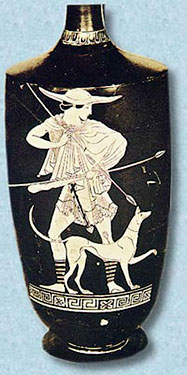 |
|
The King Kefalos
|
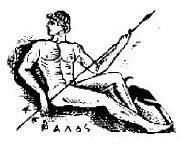 |
|
The Fortress of Agios Georgios near Peratata |
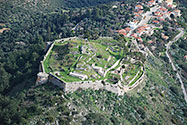 |
|
Ancient map of Kefalonia |
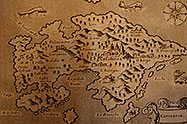 |
|
War memorial to commemorate the massacre of the italian soldiers of the Acqui Division in the 1943 |
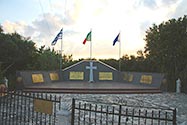 |
|
Paleokastro in the Ancient Sami
|
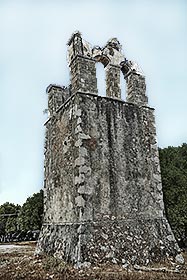 |
|
about us | sitemap | advertising | contacts | disclaimer | links |